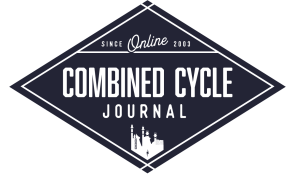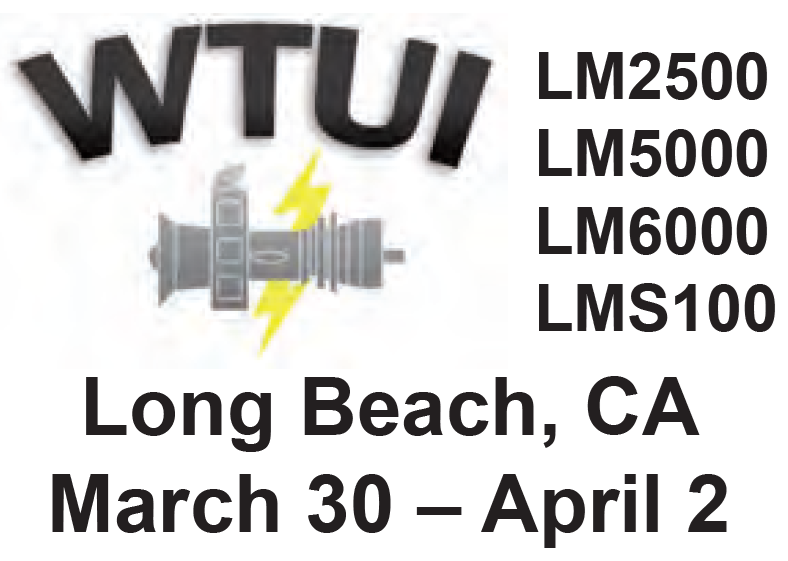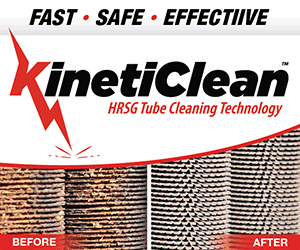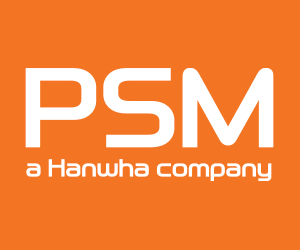2025 WTUI Coverage
- President’s welcome, leadership, history
- WTUI 2025: What’s in store – overview and technical agenda (below)
- WTUI 2025: Exhibitors and sponsors
- WTUI 2024: Detailed conference recap
- WTUI AERO FORUMS: O&M advice free for the asking
WTUI 34 (2025)
The Long Beach conference offers the opportunity to reconnect with colleagues, some of whom you may not have seen recently because of all the industry changes. WTUI organizers provide plenty of time to fulfill this objective.
Prime examples include a golf tournament Sunday morning at the Skylinks at Long Beach golf course (7:00 a.m. to 1 p.m.) and bowling tournament at CalBowl in nearby Lakewood (10 a.m. to 1 p.m.). Plus, the vendor-sponsored Sunday evening welcome reception, from 5:30 to 8:30 in the exhibit hall, which is your first opportunity to thank the more than 120 exhibitors and sponsors for their participation. The Monday night reception is in the Pacific Ballroom (adjacent to the convention center), from 6:30 to 9:30, and will feature local foods, live music, and interactive exhibits with a racing theme.
For WTUI first-timers, it’s not necessarily about connecting with colleagues, but rather meeting new people with professional needs and concerns that align with theirs. The best place to begin this process is at the Sunday afternoon session (3:30-5:00), “Welcome to WTUI/Conference Familiarization,” in Promenade 102A.
The Sunday session is chaired by Andrew Gundershaug, plant general manager, Calpine Corp, who has years of experience in the design, operation, and maintenance of GE aeros, gained both on his day job and as the organizer and discussion leader of Western Turbine’s LM5000 and LM6000 breakout sessions.
Gundershaug is a patient instructor who will help newcomers maximize the benefits of participating proactively in the engine-specific technical sessions on Monday, Tuesday, and Wednesday. Plus, he will provide valuable guidance on how to assure units under their purview operate safely and at high reliability.
In his opening remarks on Sunday, Gundershaug will explain the conference arrangement, how to organize your participation, and how to navigate the 2025 sessions for maximum effectiveness. Then he will review the progression of the LM product line from the 2500 to the 5000, to the 6000, and finally to the LMS100. The philosophy of each turbine variant will be discussed and how the turbine/generators are arranged—for example, gear or direct drive.
The slide deck for Gunderhaug’s 2024 presentation, which will be updated for 2025, contains many very instructive drawings and photographs useful in plant-breakroom training sessions. Review it on the WTUI website to better prepare for this session.
A quick read through the technical program at the bottom of this page will remind you of WTUI’s value to your professional growth and development. Highlights include the following:
- Access to the industry’s top technical talent Sunday evening through Tuesday afternoon in the vendor fair to help you solve plant problems. Think of this as free consulting.
- Special technical presentations by consultants and third-party solutions providers invited by the organization’s leadership team (p 14).
- Presentations by the OEM focusing on shop findings and solutions. Important to have CCJ’s acronyms sidebar handy (p 17) while listening to these experts because they tend to speak in shorthand—HPCR for high-pressure compressor rotor, FPI for fluorescent penetrant inspection), RPL for replaced part, etc. You don’t want to disengage from the speaker to figure out what an acronym means.
- Experience with upgrades to boost output, availability, and/or reliability, and to reduce emissions.
- Open discussions in user-only sessions that provide insights you’ll find valuable for improving the performance of your engines.
Monday morning
The pace of the meeting quickens after breakfast Monday in Exhibit Hall B of the Convention Center as all registered attendees gather at 8:00 for the General Session in Promenade Ballroom 104 for opening remarks by WTUI President Ed Jackson, plant manager of Missouri River Energy Services’ Exira Generating Station in Brayton, Iowa.
Jackson, who was elected WTUI’s leader in 2022, is only the sixth president in the organization’s more than three decades of service to the industry. His predecessors: John Hudson, 2020-2022; Chuck Casey, 2013-2020; Jon Kimble, 2008-2013; Jim Hinrichs, 1992-2008; and John Tunks, 1990-1992.
Following the introduction of officers, directors, breakout session chairs, and support staff, plus the treasurer’s financial report, badge rules, and other business matters, the conference agenda will be reviewed and appropriate acknowledgements made. This year’s meeting will differ from those in the recent past in that the three service providers (a/k/a ASPs) authorized by GE to work on LM2500 and LM6000 engines—IHI, MTU, and TCT—will not be participating.
Highlights of the first morning’s presentations, after the refreshments break in Exhibit Hall B ends at 9:45, are the following:
- GE Services’ offerings and the OEM’s new products update in Promenade Ballroom 104 from 9:45 to 11:00.
- Worldwide gas-turbine business update by Tony Brough and Mark Axford, from 11:00 to lunch at noon, also in Promenade Ballroom 104. Brough, president, Dora Partners & Company, will update the group on the state of the global gas-turbine market using engine-specific and geographic stats considered by many among the industry’s most reliable. Mark Axford, president, Axford Turbine Consultants, who has presented to this group on the state of the energy industry for two decades and a crowd favorite will use his crystal ball to help attendees prepare for the future.
Engine-specific sessions
Breakout meetings for the LM2500, LM5000, LM6000, and LMS100 gas turbines, the core of WTUI’s technical program, begin Monday afternoon at 2:30 and run until 5:30 (user and GE attendees only). Sessions continue Tuesday morning for users and GE at 8:00 until a 15-minute break in the Exhibit Hall starting at 9:15. The meetings continue for users only from 9:30 until lunch at noon.
The Wednesday program features open-forum breakouts for all registered conference attendees from 8:00 to 11:45. In sum, that’s more than nine hours of intense information transfer from engine experts to the user community. You can’t get “training” of such high caliber anywhere else in the world.
The LM2500 program is guided by Joshua Svejcar, district manager for Ever-Green Energy in the Minneapolis area and recently appointed to the WTUI leadership team. Previously, he served in management positions at Veolia North America and Foster Wheeler. Ever-Green operates the energy systems for the University of Minnesota’s Twin Cities Campus.
Svejcar takes over from Garry Grimwade, who was promoted to VP technical presentations for WTUI. Recall that Grimwade is responsible for four LM6000s, four GE10s, and a LM2500-powered combined cycle at Riverside (Calif) Public Utilities.
The LM5000 session is chaired by Perry Leslie, who watches over the Yuba City Cogeneration Plant. His responsibilities there include I&C, mechanical maintenance, and operations. Leslie has served that facility since 2004 while also managing the now-shuttered Binghamton Cogeneration Plant for a brief period. Before Yuba City, he spent six years as a field service technician for GE in the Bakersfield area working on LM1600, LM2500, LM5000, and LM6000 engines. He began his career with a six-year stint in the US Navy as a GT systems technician (electrical).
The LM6000 program is led by Breakout Session Chair Dave Fink, a gas turbine specialist at Allied Power (independent from AP4 Group) assigned to a team that supports the reliability and availability of Arizona Public Service Co’s gas-turbine fleet. Previously, Fink was an I&C technician and operator at Southwest Generation’s Fountain Valley (Colo) facility, and responsible for maintenance at that six-unit LM6000 peaking plant. His power-generation career includes six years as an electrician’s mate in the US Navy and a decade as I&C technician at Calpine’s Gilroy facility (1 × 1 7EA-powered combined cycle and three LM6000 peakers). Fink also spent eight years with F W Marsh LLC, supporting GE in the commissioning and field service of LM engines.
The LMS100 session is guided by Jason King, a plant manager for Onward Energy. The only attendees invited to LMS100 sessions are GE employees and users.
Special technical presentations
Tuesday afternoons at Western Turbine meetings are reserved for nine Special Technical Presentations, approved by WTUI leadership, to extend the meeting’s content beyond the four GE aero engines on the program. The hour-long presentations (with Q&A) are arranged in three parallel sessions beginning at 2:30, 3:30, and 4:30. Slide decks are posted on the WTUI website, but access requires an email request to Webmaster Wayne Feragen at wferagen@wtui.com.
Session 1 – 2:30-3:30
Best practices, Scott Schwieger, general manager, CCJ.
Best practices submitted to CCJ by aero users as part of the annual awards program sponsored by the periodical and WTUI, will be reviewed, with open discussion to follow. Attendees are invited to share their best practices impromptu from their seats. Challenges and experience gained during the recent Los Angeles fires will be a special focus of the session. Those lessons learned are sure to help others in developing procedures to deal with unusual events—such as floods, fires, hurricanes, tornados, earthquakes, etc. Promenade 101
Flow modeling for aero powerplant performance optimization, Matt Gentry, engineering manager, Airflow Sciences Corp.
Gentry will focus on the advantages of CFD and physical modeling as tools for optimizing the performance of plants powered by aero engines. His presentation will include SCR ammonia injection system design options and discuss issues specific to gas-fired units. Topics will include the following: pressure-drop minimization, AIG design, common issues that can result in performance degradation, and the benefits of flow modeling and testing.
Both simple- and combined-cycle plants will be addressed, with several aero projects reviewed. These examples will highlight the performance gains achievable with sophisticated flow modeling—either to solve an ongoing problem or to support unit commissioning.
Additionally, a recent project profiled will show how CFD modeling was used to redesign an ammonia injection grid. Plant operating experience has confirmed that since installation of the redesigned AIG, NOx control has improved and ammonia usage has decreased by 15% to 25%—depending on load and other conditions. Plus, ammonia salt formation on the tube banks downstream of the SCR catalyst has been reduced, cutting plant operating costs in terms of pressure loss and tube cleaning. Promenade 102 B/C
Improving HRSG efficiency with operational and design modifications, Jack Odlum, northwest regional manager, HRST Inc.
Many factors, including HRSG design, operation, and ambient conditions, can impact a combined-cycle plant’s output and efficiency. It’s common for plants to continue to operate under inefficient conditions, with significant losses in production, when there is no readily discernable symptom; tube leaks come to mind.
Some efficiency losses can be restored with relatively inexpensive corrections—such as by changing tuning set points or by modifying operating parameters. Others, such as component retrofits, require more significant changes to improve heat rate.
Odlum will focus on pathways to improve the efficiency of a typical combined-cycle plant via operating and design modifications. These may involve changes in economizer design and operation, attemperator configuration, exhaust gas bypass, exhaust backpressure, and exhaust leaks. Case studies will offer quantitative examples of heat-rate improvements. Promenade 103
Session 2 – 3:30-4:30
Troubleshooting 101: What do I do next? John Stulp, senior staff application engineer, and Brooks Hoffman, sales manager, Woodward.
Imagine you’re an operator and it’s 4 p.m. Friday. After a long week, you’re ready to wrap up for the weekend. Suddenly, the control-room horn goes off and you quickly scan to the HMI, finding that the gas turbine has tripped. You reach out to support contacts, but no one answers their phone, having already left for the weekend. You begin to wonder, “What do I do next?”
The Woodward team will cover the basics of troubleshooting and how you can begin to narrow down and pinpoint the issue at hand. Stulp and Hoffman will cover the key techniques and thought processes that Woodward’s engineering and field-service organizations follow while troubleshooting. Plus, the information that should be retrieved and saved from an event that all providers of controls support will want.
Goal of the presentation is for attendees to leave the session better equipped to solve their own onsite issues while ensuring that critical information is gathered and retained to share with supporting parties, if need be—thereby eliminating delay in third-party support. Promenade 101
Aeroderivative airfoil repair options and best practices, Scott Hastie, engineering manager, Liburdi Turbine Services Inc.
Hastie will provide a comprehensive non-commercial review of the typical failure mechanisms that impact the lives of airfoils in aeroderivative gas turbines, and the options available for reliably extending the service lives of these mission-critical components.
Increasingly, options for extending the lives of critical components are being requested both by operators and service providers. However, the metallurgical complexity and geometry of these parts demands an expertise and understanding of how to successfully maintain their integrity while ensuring an expected service interval when the part is returned to operation.
The presentation will provide photographic examples of both the typical and atypical wear and tear exhibited by blades and vanes after their use in industrial aero turbines.
Options will be explored for how to evaluate and ultimately repair these parts with examples of the same parts returned to service over and over again, instead of simply being replaced with new.
Consideration will be provided for concerns such as coating integrity, maintaining OEM-required wall thicknesses, and restoration of part geometries that ensure post-repair performance restoration. Promenade 102 B/C
How to prevent catastrophic failure during extreme conditions—wildfires, for example, Allyse Wilcox, western regional manager, and Paul Klick, power-gen manager for the Americas.
Many LM2500 and LM6000 turbines re operating with a static filtration system and have no ability to pulse. Wilcox and Klick will highlight the steps owner/operators can take to keep turbines generating at peak performance even when encountering difficult environmental challenges—including wildfires, a coastal (corrosive) environment, industrial chemicals, hydrocarbons from vehicle exhaust, and cottonwood.
The speakers will share their expertise on how to optimize fuel consumption, extend filter service life, differentiate between F9 and HEPA, and how predictive, reliable maintenance can extend your turbine’s life and lower the total cost of ownership. Promenade 103
Session 3 – 4:30-5:30
Aeroderivative generator challenges, W Howard Moudy, managing director, National Electric Coil.
The generator component of aeroderivative gas turbines has received much less attention than the engine as these machines have grown in popularity—especially regarding maintenance, upgrade, uprate, and life extension to meet current and future expectations. Moudy will focus on specific challenges facing generators for aero units.
His presentation will begin with a well-illustrated review of aero generator components which will be familiar to participants with a working knowledge of generators, their functions, and characteristics.
Common generator issues, including cycling, will be shared along with guidance on maintenance and options for long-term solutions. Most generator issues discussed will be applicable across most makes and models, but some unique differences will be identified and guidance provided.
Considering many aero generators are approaching, or have passed, their design lifetimes, a primary focus of Moudy’s remarks will be generator life extension through rewind, with the rotor and stator explored individually.
Key technical characteristics, planning details, and execution factors will be shared relating to successfully achieving performance and quality expectations, while at the same time working within schedule and budget parameters. Promenade 101
Maintain, monitor, and modernize to make aging switchgear safer, Umer Khan, PE, global product manager, ABB Electrification Service.
Khan aims to fulfill three learning objectives in his time at the podium. They are:
- Explore challenges associated with maintaining legacy switchgear.
- Learn how equipment maintenance plans can enhance electrical safety.
- Come up to speed on the impact of modernization and digitalization to enhance optimization and effectiveness of equipment maintenance plans.
Reliability and safety are critical topics when it comes to optimization of switchgear asset performance and lifecycle. Today’s asset managers face economic limitations that require deeper analysis to prioritize investment needs. In many cases, traditional practices—such as reactive and even preventive maintenance—may appear the most cost-effective solutions; however, in practice, they may compromise performance targets for reliability and safety, leading to economic setbacks in downtime and overall operating cost.
Conversely, switchgear modernization and monitoring can support equipment maintenance practices that lead to robust performance and lifecycle extension of the equipment. Through modernization and digitalization of their equipment, asset managers can optimize their equipment maintenance plans (EMP) for a more reliable, safer, and cost-effective result.
Design and implementation of an effective EMP is critical. A robust plan requires consideration of many factors—including the following:
- NFPA 70B, “Standard for Electrical Equipment Maintenance.”
- NFPA 70E, “Standard for Electrical Safety [in the workplace].”
- Manufacturer recommendations.
- System conditions.
- Workforce availability.
- Outage restrictions.
- Budget constraints.
Maintenance plans are complex to build and require continuous improvements as the processes and methodologies are implemented. Additional topics to be discussed include these:
- Condition monitoring for safety and reliability.
- Infrared and partial-discharge monitoring.
- Maintenance optimization to meet safety KPIs.
- Repair/overhaul optimization by design.
- Operational safety by design and spare-parts management.
Developing a strategic asset management plant that considers lifecycle costs, risk-mitigation strategies, and technology trends is essential for informed decision-making. Major challenges include these: obsolescence of parts/equipment, lack of technical documentation, expertise gap, reliability and safety, and sustainability and environmental impact (SF6 gas, asbestos, etc).
Bear in mind that aging switchgear typically undergoes a gradual decrease in reliability, causing unexpected downtime and failures. Additionally, electrical safety codes and standards evolve over time. While these do not mandate replacement of legacy equipment in most cases, ensuring the safety of personnel and equipment becomes increasingly difficult with older switchgear not built to comply with today’s codes and standards. Promenade 102 B/C
Predictive analytics: Applying SI processes in ORAP® with the national labs, Salvatore A DellaVilla Jr, founder, chairman, and CEO, Strategic Power Systems Inc.
SPS has been working with DOE, National Energy Technology Laboratory (NETL), and Oak Ridge National Laboratory (ORNL) in the development and application of artificial intelligence (AI) techniques to demonstrate the predictive value of the time series data available for analysis in the ORAP system. This effort focused on the following:
- Development of Machine Learning (ML) models to predict “when” an unexpected outage event will occur, and what will be the cause of that event at a component level.
- Use of Natural Language Processing (NLP) processes to improve the quality and standardization of outage-event descriptions reported by participating operating plants.
- Defining the use of AI and Large Language Models (LLM) for training, ORAP data processing and preparation, and interpretive data assessment.
DellaVilla, whose involvement with GE aeros predates the formation of the Western Turbine Users Inc, will focus on project results, feedback from an advisory board of operating companies, and the readiness for beta field testing and demonstration. Promenade 103
Technical Program
Conference registration: Convention Center Promenade Lobby
Exhibits: Convention Center Exhibit Hall C
Breakfasts Monday and Tuesday: Convention Center Exhibit Hall B
Breakfast Wednesday: Convention Center Promenade Ballroom 104 (foyer)
Luncheons: Convention Center Exhibit Hall B
LM2500 Breakout Meetings: Promenade 101
Chair: Joshua Svejcar, Veolia
LM5000 Breakout Meetings: Promenade 102A
Chair: Perry Leslie, Yuba City Cogeneration
LM6000 Breakout Meetings: Promenade 103
Chair: Dave Fink, Allied Power
LMS100 Breakout Meetings: Promenade 102B/C
Chair: Jason King, Onward Energy
Sunday, March 30
AFTERNOON
2:00 to 7:30 Conference registration
3:30 to 5:00 Welcome to WTUI/Conference Familiarization, Promenade 102A
Chair: Andrew Gundershaug, Calpine Corp
All new registered conference attendees
EVENING
5:30 to 8:30 Exhibitor-Sponsored Welcome Reception, Convention Center Exhibit Hall
All registered attendees and spouses/guests
Monday, March 31
MORNING
7:00 to 4:00 Conference registration
7:00 to 8:00 Breakfast
All registered conference attendees
7:00 to 5:30 Exhibit Hall open
Must have name badge to enter
8:00 to 9:30 General Session, Promenade Ballroom 104
All registered conference attendees
9:30 to 9:45 Break Exhibit Hall B
9:45 to 11:00 GE Services/New Products Update, Promenade Ballroom 104
All registered conference attendees
11:00 to noon Worldwide GT Business Update, Promenade Ballroom 104
Mark Axford, Axford Turbine Consultants LLC
All registered conference attendees
AFTERNOON
Noon to 1:00 Lunch and activity awards
Must have name badge to enter
Noon to 2:30 Lunch/Exhibits
Must have name badge to enter
1:30 to 2:30 Women in Energy, Promenade 102A
2:30 to 5:30 Breakout Meetings: LM2500, LM5000, LM6000, LMS100
Users and GE only (blue and yellow badges)
EVENING
6:30 to 9:30 Monday Night Reception, Convention Center Pacific Ballroom (adjacent to the Convention Center)
All conference attendees and registered spouses/guests. Must have name badge or wristband and be 21 years old for entry.
Tuesday, April 1
MORNING
7:00 to 4:00 Conference registration
7:00 to 8:00 Breakfast
All registered conference attendees
7:00 to 2:30 Exhibit Hall open
Must have name badge to enter
8:00 to 9:15 Breakout Meetings: LM2500, LM5000, LM6000, LMS100
Users and GE only (blue and yellow badges)
9:15 to 9:30 Break, Exhibit Hall
9:30 to noon Breakout Meetings: LM2500, LM5000, LM6000, LMS100
Users only (blue badges)
AFTERNOON
Noon to 1:00 Lunch and recognition awards
Must have name badge to enter
Noon to 2:30Lunch/Exhibits
Must have name badge to enter
2:30 to 5:30 Special Technical Presentations
All registered conference attendees
2:30 to 3:30
- Aero best practices (CCJ), Promenade 101
- Flow modeling for aero powerplant performance optimization (Airflow Sciences), Promenade 102B/C
- Improving HRSG efficiency with operational and design mods (HRST), Promenade 103
3:30 to 4:30
- So, what’s going on in my turbine control anyway? (Woodward), Promenade 101
- Aero airfoil repair options and best practices (Liburdi), Promenade 102B/C
- How to prevent (inlet air) catastrophic failure during extreme conditions (Donaldson), Promenade 103
4:30 to 5:30
- Aero generator challenges (NEC), Promenade 101
- Maintain, modernize switchgear (ABB), Promenade 102B/C
- Predictive analytics: Applying AI processes in ORAP® with national labs (SPS), Promenade 103
Wednesday, April 2
MORNING
7:00 to 8:00 Breakfast
8:00 to 11:45 Open Forums: LM2500, LM5000, LM6000, LMS100
All registered conference attendees
11:45 to noon Wrap-up/Adjourn, Promenade Ballroom 104
All registered conference attendees










